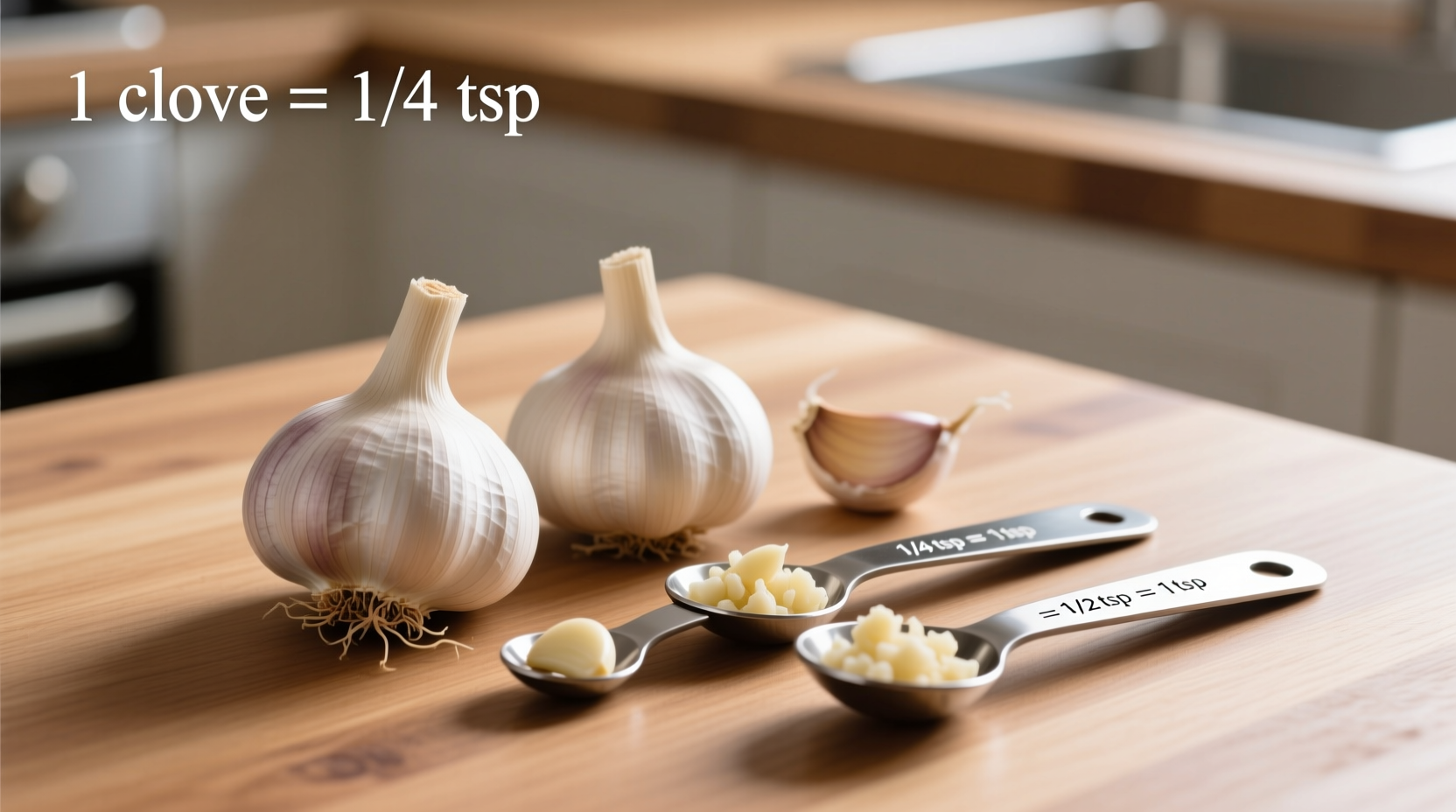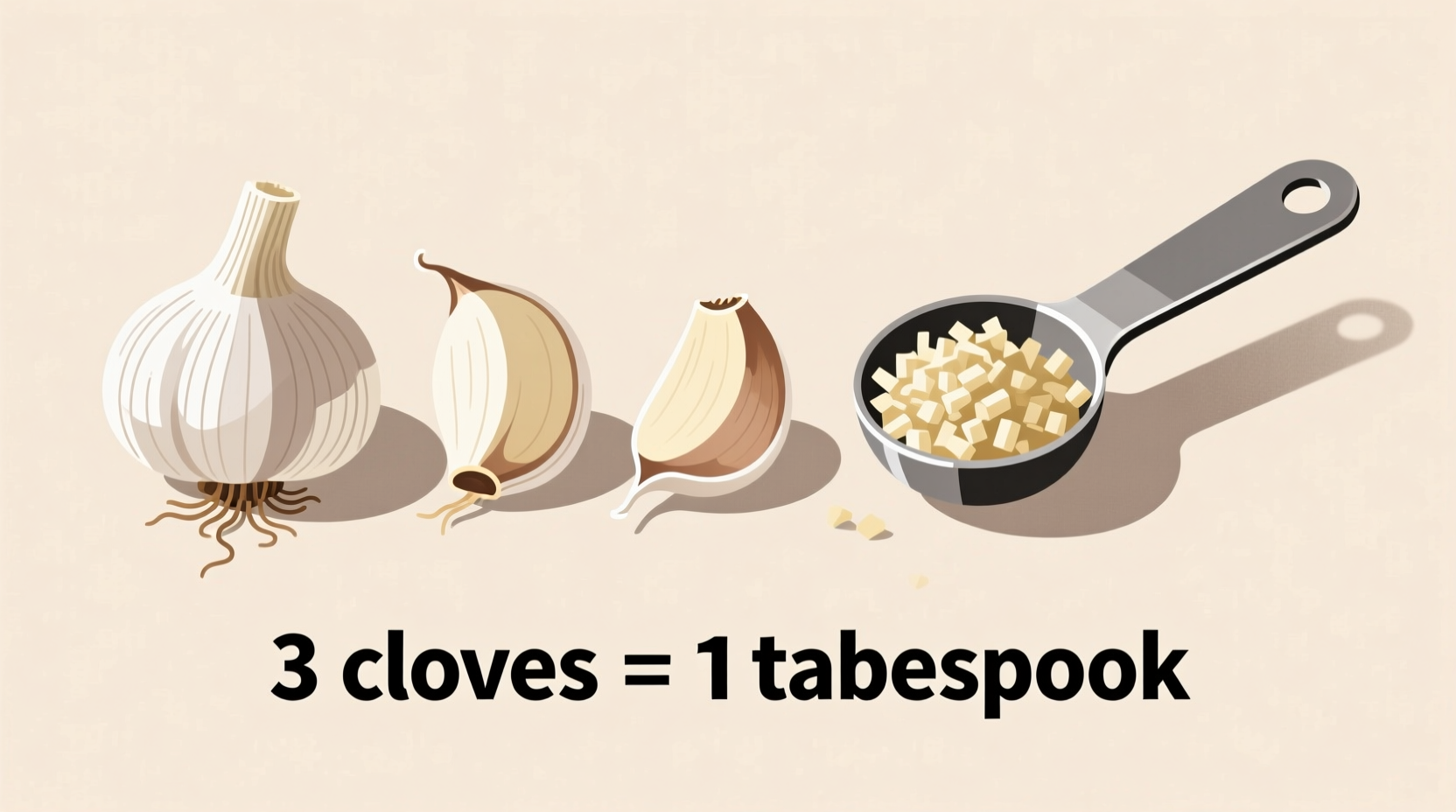Understanding Garlic Measurements for Perfect Cooking
When following recipes, you've likely encountered the frustrating gap between "garlic cloves" and "tablespoons." As a home cook, getting this measurement right affects your dish's flavor balance significantly. Let's solve this common kitchen puzzle with precise, actionable information.Why Garlic Measurement Matters in Cooking
Garlic's potent flavor can make or break a dish. Too little leaves recipes flat; too much overwhelms other ingredients. Professional chefs rely on volume measurements for consistency, especially when scaling recipes. The USDA's National Nutrient Database confirms that precise garlic measurements directly impact both flavor profiles and nutritional content in prepared dishes.Garlic Clove to Tablespoon Conversion Guide
| Garlic Cloves | Mince Volume (Tablespoons) | Teaspoons Equivalent |
|---|---|---|
| 1 small clove | ½ tbsp | 1½ tsp |
| 1 medium clove | 1 tbsp | 3 tsp |
| 1 large clove | 1½ tbsp | 4½ tsp |
| 3 medium cloves | 1½ tbsp | 4½ tsp |
This conversion chart reflects data from the Culinary Institute of America's standardized measurements used in professional kitchens. Note that garlic size dramatically affects volume—always consider your specific cloves' dimensions.
Factors That Change Your Garlic Measurement
Several variables impact how many tablespoons three garlic cloves yield:- Clove size: Grocery store garlic varies significantly. A single "large" clove might equal two "small" ones
- Preparation method: Roughly chopped garlic takes more volume than finely minced
- Packing density: How tightly you press minced garlic into the spoon changes measurements
- Moisture content: Freshly harvested garlic contains more water than stored bulbs

Practical Measurement Techniques for Home Cooks
When your recipe specifies "three cloves" but you need tablespoons:- Standard approach: For medium cloves, use 1½ tablespoons minced garlic
- Size adjustment: If cloves are unusually large, increase to 2 tablespoons; for small cloves, use 1 tablespoon
- Professional trick: Weigh cloves—three medium cloves typically weigh 9-12 grams (0.3-0.4 oz)
- When precision matters: For delicate sauces or baking, use a kitchen scale for exact measurements
When Volume Measurements Fall Short
While tablespoon measurements work for most savory dishes, certain applications require different approaches:- Raw applications: In salads or dressings, use slightly less garlic as raw flavor intensifies
- Long-cooking dishes: For stews simmered over hours, increase garlic by 25% as flavor mellows
- Garlic sensitivity: Some people detect allicin (garlic's active compound) more strongly—adjust to personal tolerance
FAQs About Garlic Measurements
How many teaspoons is three cloves of garlic?
Three medium garlic cloves equal approximately 4½ teaspoons when minced. Remember that clove size affects this conversion—small cloves yield about 3 teaspoons while large cloves can reach 6 teaspoons.
Does roasted garlic measure the same as raw garlic?
No, roasted garlic yields about 20% less volume than raw garlic due to moisture loss during cooking. For roasted garlic, three medium cloves typically equal 1¼ tablespoons instead of the standard 1½ tablespoons for raw.
Can I substitute garlic powder for fresh cloves in tablespoon measurements?
Yes, but use this conversion: ⅛ teaspoon garlic powder equals one fresh clove. Therefore, three cloves would substitute to ⅜ teaspoon garlic powder. Remember that powder has more concentrated flavor, so start with less and adjust to taste.
Why do my garlic measurements sometimes taste too strong?
This often happens because garlic's potency varies by season and storage conditions. Freshly harvested 'wet' garlic has milder flavor than stored 'dry' garlic. Also, mincing releases more allicin than slicing. For consistent results, always smell your garlic before using—it should have a clean, sharp aroma without bitterness.











 浙公网安备
33010002000092号
浙公网安备
33010002000092号 浙B2-20120091-4
浙B2-20120091-4